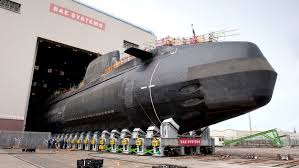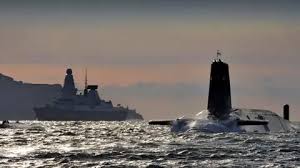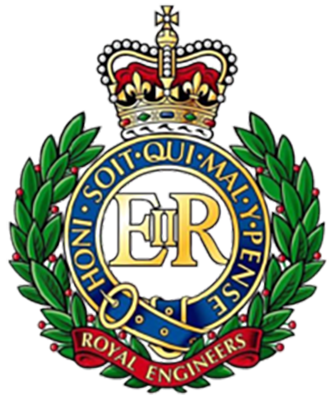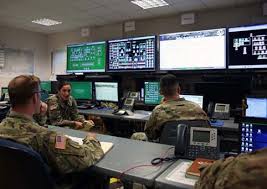Submarine Engineers
Introduction
Operating in total secrecy beneath the world’s oceans, the Royal Navy’s submarines are among the most sophisticated and stealthy machines ever built. But these multi-billion-pound vessels would be nothing without the skilled hands and sharp minds of Submarine Engineers—the personnel responsible for keeping the boat’s critical systems running under immense pressure, literally and figuratively.
From nuclear propulsion to weapons systems and life-support operations, submarine engineers play a vital behind-the-scenes role in deterrence, surveillance, and strike missions. It’s one of the most demanding but highly respected jobs in the UK military.

What is a Submarine Engineer?
Submarine Engineers are trained specialists who maintain, repair, and operate the mechanical and electrical systems aboard Royal Navy submarines. These range from nuclear propulsion units to air filtration systems, weapons mechanisms, and hydraulic networks.
They ensure the submarine can:
- Move silently through hostile waters
- Launch nuclear or conventional missiles
- Keep all 100+ crew alive for months underwater
- Evade detection and attack from adversaries
It’s a job that combines advanced technical skill with extraordinary psychological endurance.
Types of Engineers Onboard
Royal Navy submarines typically include several engineering roles, each with a defined specialty:
| Role | Key Responsibilities |
|---|---|
| Marine Engineer | Propulsion, water purification, hydraulic systems |
| Weapons Engineer | Missile tubes, torpedoes, sonar, fire control |
| Nuclear Engineer | Nuclear reactor systems, coolant loops, radiation safety |
| Electrical Engineer | Lighting, navigation, sensors, communications |
| Control Room Engineer | Operational systems, periscope control, pressure stability |
Each must respond instantly to malfunctions, often without surface contact or backup.

Submarine Types in the Royal Navy
Submarine engineers serve aboard:
- Vanguard-class – Nuclear ballistic missile subs (SSBNs) for the UK’s nuclear deterrent
- Astute-class – Attack submarines (SSNs) for strike, reconnaissance, and carrier group support
- Trafalgar-class (being phased out) – Older SSNs still in limited service
- Dreadnought-class (from 2030s) – Next-gen SSBNs under construction
Each class has unique systems, meaning engineers receive tailored training depending on their vessel.
Life Aboard a Submarine
Serving as a submarine engineer isn’t just a job—it’s a lifestyle. Expect:
- Deployments up to 3–6 months underwater
- No daylight or internet, only secure email
- Rotating shift work (typically 6 hours on, 6 hours off)
- Shared bunks and compact quarters
- High-stress emergency drills, including flooding and fire
- Close-knit teams, often forming lifelong bonds
- Total secrecy—missions are rarely disclosed to even families
Despite these hardships, submariners receive generous pay, unmatched camaraderie, and the satisfaction of critical service.

Entry Requirements
To become a Submarine Engineer, you must:
- Be a British citizen or eligible Commonwealth applicant
- Be aged 16–39 (varies slightly by role)
- Pass Royal Navy fitness and medical tests
- Hold relevant GCSEs or A-Levels, depending on engineering path
- Pass security clearance due to nuclear work
- Commit to at least 4–6 years service (longer for nuclear roles)
Training Path
- Basic Training
- Conducted at HMS Raleigh (10 weeks)
- Includes fitness, weapons, naval life, and team exercises
- Engineering Trade Training
- Delivered at HMS Sultan (Marine/Electrical Engineers) or HMS Collingwood (Weapons Engineers)
- Subjects include:
- Engineering mathematics
- Mechanical/electrical systems
- Diagnostics and repair
- Use of specialist tools and software
- Safety protocols and nuclear awareness
- Submarine Qualification Course (“The Part III”)
- Held at Faslane Naval Base
- Trainees must pass:
- Knowledge of all onboard systems
- Emergency drills
- Practical engineering scenarios
- Oral boards with senior engineers
- Nuclear Engineering Training (Optional/specialist)
- Includes nuclear physics, reactor operations, and radiation safety
- Conducted at Devonport and Rolls-Royce facilities

Career Progression
| Rank | Role |
|---|---|
| ET (Engineering Technician) | Trainee, completes Part III |
| LET (Leading Engineering Technician) | Junior engineer on live sub |
| POET (Petty Officer) | Manages sub-systems and mentoring |
| CPOET (Chief Petty Officer) | Senior engineer, oversees watch teams |
| WOET (Warrant Officer) | Technical expert and team leader |
| Commissioned Officer (optional path) | Engineering Officer, manages department |
Top engineers can also become:
- Nuclear Watch Supervisors
- Instructor roles (training new engineers)
- MOD civilian technical consultants
- Submarine Design Advisors (Barrow-in-Furness or Babcock)
Pay and Perks
Submarine Engineers are among the best-paid non-officers in the UK military.
| Level | Pay Range |
|---|---|
| Trainee | £18,000–£23,000 |
| Post-Qualification | £25,000–£33,000 |
| With Submarine Pay | +£5,000 to £10,000 bonus |
| Experienced NCO | £40,000–£55,000 |
| Nuclear Engineers | £45,000–£65,000+ |
Additional benefits include:
- Submarine Pay (submariner allowance)
- Extended leave after deployments
- Accelerated promotion
- MOD-sponsored degree courses (BEng, HND)
- Housing and food allowance
- Veterans’ resettlement training
- Civil nuclear industry recruitment preference

Real-World Missions
Submarine engineers play a role in:
- UK nuclear deterrence patrols (Operation Relentless)
- Arctic exercises (under-ice navigation and endurance)
- Surveillance of Russian naval movements
- Covert Special Forces insertion and recovery
- Tomahawk missile strikes (e.g., against ISIS in Syria)
- Testing and trials of new propulsion systems (Barrow, Faslane)
They are the silent guardians beneath the seas.
Civilian Transition Opportunities
Highly trained submarine engineers are in demand post-service. Common career paths include:
- Nuclear power industry (EDF, Rolls-Royce, Sizewell B)
- Oil and gas engineering (Shell, BP, offshore rigs)
- Submarine design and testing (BAE Systems, Babcock)
- MOD/DSTL technical roles
- STEM teaching or training providers
- Aerospace and defence contractors
Some engineers also go on to academic research, marine robotics, or emergency services maintenance.

Challenges and Mental Readiness
✅ Pros:
- High pay and rapid career growth
- Elite status within Royal Navy
- Job security and civilian demand
- Travel and specialist skills
- Camaraderie and pride of service
⚠️ Challenges:
- Long periods away from home and family
- Intense pressure in confined, isolated space
- High entry bar and long training
- Mental and emotional fatigue from months underwater
- Secrecy—little public recognition
Conclusion
Submarine Engineers are the invisible force behind the Royal Navy’s most powerful weapons. Whether powering a silent vessel beneath the polar ice or launching a precision missile strike, they keep the boat and its crew alive, safe, and lethal. It’s a career that requires intelligence, toughness, and total commitment—but offers a unique brotherhood, financial rewards, and unparalleled technical training.
For those who thrive in pressure, prefer purpose over publicity, and seek mastery of one of the world’s most demanding machines, the depths of the Royal Navy await.





